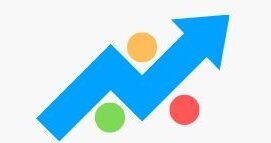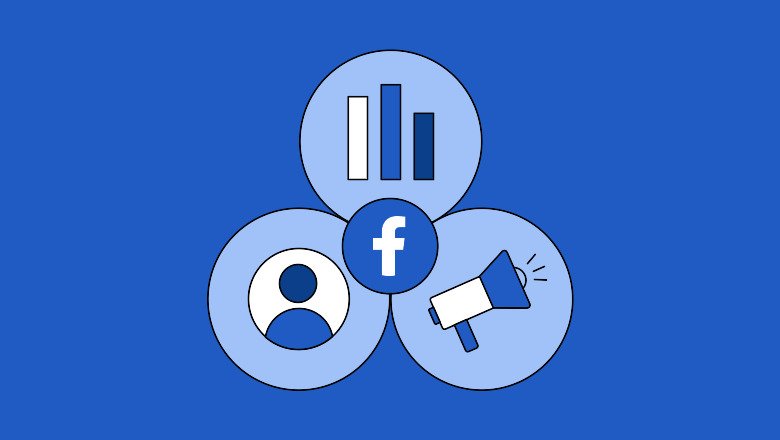All Facebook Campaign Types You Need to Know in 2025 (With Simple Explanations)
If you’re looking to use Facebook ads professionally and want to understand which ad campaign type works best for your business or online store, you’ve come to the right place.
Facebook is not just a social media platform—it’s a powerful marketing tool, thanks to its 2.9+ billion monthly active users. But to achieve effective results, you must understand the different types of Facebook ad campaigns and when to use each one to meet your specific goals.
In this comprehensive guide, we’ll explore all Facebook ad campaign types available through Meta Ads Manager, with clear and human-friendly explanations for each, plus practical tips to help you make the right choice.
What Is Meta Ads Manager?
Meta Ads Manager is the official platform from Meta to create, customize, and manage ad campaigns across Facebook, Instagram, Messenger, and the Meta Audience Network. When you start creating an ad, the first step is selecting a campaign objective, which defines your ad type.
The Main Types of Facebook Ad Campaigns
Facebook ad campaigns are divided into six primary categories, each serving a unique purpose along the customer journey—from awareness to consideration to conversion.
Let’s break down each type with simple and effective insights.
1. Awareness Campaigns
Objective: Make people aware of your business or product.
This campaign type is ideal when your main goal is to increase brand visibility, not necessarily to generate immediate actions like purchases or sign-ups.
Subtypes:
- Brand Awareness: Targets users likely to remember your brand later.
- Reach: Maximizes the number of people who see your ad.
When to use it:
- Launching a new product or business.
- Entering a new market.
- Building brand recognition.
Quick tip:
Use high-impact visuals or short videos to grab attention in the first few seconds.
2. Traffic Campaigns
Objective: Drive visitors to your website, app, or a specific link.
This campaign is perfect if your goal is to increase the number of visits to a blog post, landing page, or product page.
How it works:
Facebook shows your ad to people most likely to click on your link.
Best used for:
- Launching new content or product pages.
- Boosting blog readership.
- Supporting SEO through increased website traffic.
Keep in mind:
Clicks don’t always equal conversions. Use this to build awareness or lead to a conversion funnel.
3. Engagement Campaigns
Objective: Get more interaction with your content.
This is ideal for increasing likes, comments, shares, or follows on your Facebook page or posts.
Engagement subtypes:
- Post Engagement
- Page Likes
- Event Responses
Why it matters:
- Boosts your organic reach.
- Helps build an audience of engaged followers.
Pro strategy:
Run this first to warm up your audience, then retarget them with conversion-focused ads later.
4. Lead Generation Campaigns
Objective: Collect leads like email addresses or phone numbers.
Also known as lead ads, these campaigns help you build a database of potential customers who are interested in your offer.
Lead options:
- Native Facebook lead form.
- Redirect to an external landing page.
- Messenger or WhatsApp conversations.
Common uses:
- Booking a free consultation.
- Signing up for a newsletter.
- Accessing a free guide or eBook.
Why it’s powerful:
Because you’re collecting real data to use in email marketing or retargeting.
5. App Promotion Campaigns
Objective: Get more people to install your mobile app.
If you have a mobile app—whether it’s a game, service, or e-commerce platform—this is your go-to campaign type.
How it works:
Facebook targets people likely to download and use your app.
Tips for success:
- Use videos to demonstrate app usage.
- Target users who engage with similar apps or genres.
6. Conversion Campaigns
Objective: Drive valuable actions like purchases or sign-ups.
These are the most powerful campaigns if your goal is to drive revenue or measurable actions.
Examples of conversions:
- Product purchases.
- Account sign-ups.
- Filling out a form.
How it works:
Requires the Facebook Pixel installed on your website to track user actions such as “Add to Cart” or “Complete Purchase.”
Subtypes:
- Conversions: Optimize for website events.
- Catalog Sales: Dynamic ads from your product feed.
- Store Traffic: Bring customers to your physical location.
Why they’re effective:
They focus on people who are most likely to take action and allow for precise retargeting.
Simplified Comparison Table
| Campaign Type | Main Goal | Best For | Funnel Stage |
|---|---|---|---|
| Awareness | Increase brand exposure | New businesses, markets | Top of the funnel |
| Engagement | Boost content interaction | Building page activity | Middle |
| Traffic | Website visits | Blogs, product pages | Top/Middle |
| Lead Generation | Collect contact info | Services, consultations | Middle/Bottom |
| App Promotion | App installs | Mobile apps | All stages |
| Conversions | Drive purchases/actions | Online stores, services | Bottom of the funnel |
Smart Tips for Choosing the Right Campaign Type
- Be clear about your goal: Are you looking for awareness, leads, sales, or traffic?
- Start with awareness: Don’t expect conversions from cold audiences. Build the relationship first.
- Test multiple types: What works for a fashion brand may not work for a course or coaching program.
- Monitor and optimize: Use Ads Manager to track performance, test creatives, and adjust targeting.

